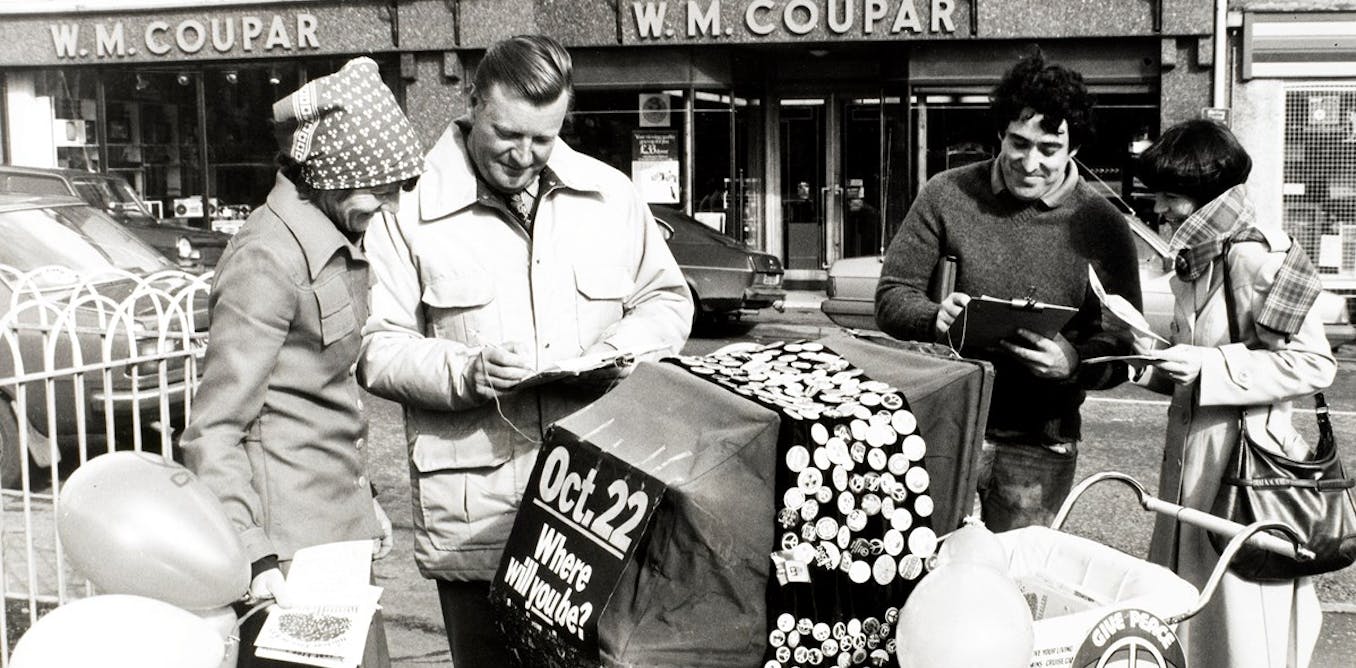It is against this backdrop that Cold War Scotland explores the stories of Scots at the centre of this global conflict. The National Museum of Scotland exhibition showcases how the impact of that war still lingers in Scottish politics, culture and memory.
The exhibition starts with a series of short films depicting how Scotland became a cold war battleground. The geographic position of Scotland between the US and the USSR, and direct access to the Atlantic meant Scotland would play a vital role for the North Atlantic Treaty Organisation’s (Nato) defences. Faslane, on the banks of Gare Loch, is the site of the UK’s only nuclear submarine base. The show demonstrates how nuclear power and nuclear weapons came to dominate peoples’ minds – and how Scottish communities were explicitly told they were nuclear targets.
Cold war on display
There are dozens of objects on display to “trigger” the sensitive gen Xer’s consciousness, including secret intelligence documents and a map of central Scotland marked to highlight targets under threat of nuclear attack.
The giant twin steel-making boilers of Ravenscraig in Motherwell were always visible from my bedroom in Hamilton. Our neighbour worked there. “That’s the first place The Russians will hit around here son,” he told me, muscly iron ore arms folded. He was right. It is on the map. As is Faslane, close to where I currently live.


